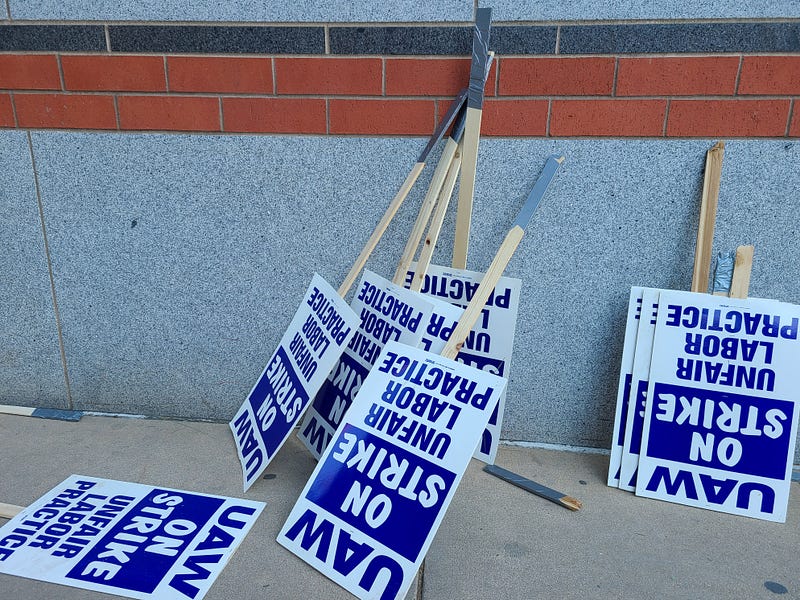Labor Dispute Disrupts Drivers but May Boost EVs
UAW strike could cripple the industry in the short term but reshape it in the long term
Based on research by Edward Anderson

Since the United Auto Workers made history Sept. 15 by striking against all three leading U.S. automakers, the nation’s eyes have focused on the picket lines. But Edward Anderson, a professor of information, risk, and operations management at Texas McCombs, is looking elsewhere. He sees dangerous economic ripple effects spreading far beyond the Big Three of Ford, General Motors, and Stellantis.
“The economic impact of an extended strike would be way more than most people understand,” Anderson says.
The automotive industry and its supply chains make up 5% of the U.S. economy, he notes, and the companies being struck by the UAW are 45% of the American auto industry. If the strike lasts much longer, he says, it could steer the country into a recession.
Anderson, who is also the Mr. and Mrs. William F. Wright Centennial Professor for Management of Innovative Technology, has a unique point of view on the conflict. He’s an academic researcher who has literally written the book on supply chain and operations management. But he has also been inside the industry, working on product design at both Ford and GM.
Watch Ed Anderson on how the strike might affect auto repairs
From that double perspective, Anderson sees several potential consequences of an extended work stoppage:
Edge for Electric Vehicles
Leading EV companies aren’t unionized, and the strike may give them a chance to expand their market share. Their labor costs are already 30% lower than the Big Three’s. Says Anderson, “Tesla, Rivian, and BYD are slavering over this.”
There’s a ray of light for traditional automakers, as they shift to producing EVs. Because EVs have fewer parts to assemble, the transition could reduce their labor expenses by a third. They’ll need to build more battery plants to power the EVs, but battery plant labor costs only half that of UAW assembly workers.
That cost advantage may not survive the strike, however. On Oct. 6, the union announced that GM had agreed to include battery plant workers in its UAW contract.
EVs also could add costs in other areas. “One long-term problem for the Big Three is that they need as much money as possible to convert over to EVs,” Anderson says. “Refurbishing plants is very expensive.”
Unavailable Parts
While the strike has idled eight assembly plants to date, it also covers 38 parts and distribution centers. That will affect both dealers and drivers, Anderson says.
“This will quickly hinder the dealers from doing repairs, as they haven’t been able to stockpile parts due to shortages,” he says. “Dealers make a lot of their money from repairs and almost none from new car sales. Consumers will also be hit immediately, because you can’t defer repairing a car.”
Supply Chain Shutdowns
The UAW is threatening to shift the strike toward engine plants if negotiations don’t improve. Says Anderson, “No engines mean no auto production.”
But disruptions won’t stop with engines, he adds. “These gaps in production propagate throughout the supply chain like lightning. If only one part in the supply chain is taken out, it’ll be less than a week before the whole supply chain is taken down.”
Strikes Are Spreading
The UAW also struck a critical supplier for Mercedes-Benz for 29 days. Although the union and supplier reached a settlement, the strike had threatened to shut down Mercedes-Benz’s Alabama assembly plants.
“Mercedes-Benz has always felt safer because it employs nonunion labor,” Anderson says. “But their problem is that the UAW can still hit them through their suppliers.”
Unifor, the Canadian equivalent to the UAW, briefly struck two GM plants before reaching a tentative settlement. “People don’t realize this, but Canadian plants supply a large part of the U.S. auto market. When they strike, the U.S. feels it,” Anderson says.
Don’t Buy a Car Yet
Ford, GM, and Stellantis prepared for the strike by adding inventory at their dealers. Dealers also have been stocking up on used cars even though they’re paying high interest rates on loans to acquire them.
But it’s not clear how much that will help to stabilize prices, because dealerships are known to exploit consumer panic. Advises Anderson, “I’d wait to buy a car until about 30 days after this strike has ended.”
Story by Judie Kinonen and Steve Brooks


